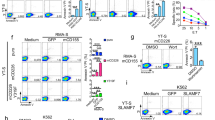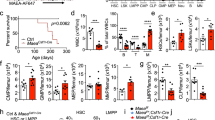Abstract
Constitutively active Rac stimulates Akt activity in T lymphocytes cultured in suspension. This regulation contrasts with findings obtained in fibroblasts, endothelial or neuronal cells grown on substrate, where Akt stimulation occurs independently of Rac. We now show that V12Rac-mediated stimulation of Akt is not restricted to the hematopoietic lineage but is dependent on the adherence status of the cell. V12Rac-mediated stimulation of Akt as well as molecular association between Rac and Akt occurred exclusively in cells kept in suspension. Stimulation and complex formation are dependent on SHIP but in a manner that differs from its role in dephosphorylation of phosphoinositide lipids. Adherent cells lacking SHIP, but not those lacking PTEN, are able to activate Akt through the Rac pathway. Our data reveal the existence of a bona fide Rac to Akt signaling pathway, tightly regulated by SHIP and operational in suspended cells only. This pathway may point to an alternative survival signal that is called into action when cells lose contact with the substrate and/or with other cells.
This is a preview of subscription content, access via your institution
Access options
Subscribe to this journal
Receive 50 print issues and online access
$259.00 per year
only $5.18 per issue
Buy this article
- Purchase on Springer Link
- Instant access to full article PDF
Prices may be subject to local taxes which are calculated during checkout





Similar content being viewed by others
References
Astoul E, Edmunds C, Cantrell DA, Ward SG . (2001). PI 3-K and T-cell activation: limitations of T-leukemic cell lines as signaling models. Trends Immunol 22: 490–496.
Coniglio SJ, Jou TS, Symons M . (2001). Rac1 protects epithelial cells against anoikis. J Biol Chem 276: 28113–28120.
Del Pozo MA, Kiosses WB, Alderson NB, Meller N, Hahn KM, Schwartz MA . (2002). Integrins regulate GTP-Rac localized effector interactions through dissociation of Rho-GDI. Nat Cell Biol 4: 232–239.
Del Pozo MA, Price LS, Alderson NB, Ren XD, Schwartz MA . (2000). Adhesion to the extracellular matrix regulates the coupling of the small GTPase Rac to its effector PAK. EMBO J 19: 2008–2014.
Downward J . (2004). PI 3-kinase, Akt and cell survival. Semin Cell Dev Biol 15: 177–182.
Frisch SM, Ruoslahti E . (1997). Integrins and anoikis. Curr Opin Cell Biol 9: 701–706.
Génot E, Reif K, Beach S, Kramer I, Cantrell D . (1998). p21ras initiates Rac-1 but not phosphatidyl inositol 3 kinase/PKB, mediated signaling pathways in T lymphocytes. Oncogene 17: 1731–1738.
Genot EM, Arrieumerlou C, Ku G, Burgering BM, Weiss A, Kramer IM . (2000). The T-cell receptor regulates Akt (protein kinase B) via a pathway involving Rac1 and phosphatidylinositide 3-kinase. Mol Cell Biol 20: 5469–5478.
Grodzki AC, Pastor MV, Sousa JF, Oliver C, Jamur MC . (2003). Differential expression of integrin subunits on adherent and nonadherent mast cells. Braz J Med Biol Res 36: 1101–1109.
Higuchi M, Masuyama N, Fukui Y, Suzuki A, Gotoh Y . (2001). Akt mediates Rac/Cdc42-regulated cell motility in growth factor-stimulated cells and in invasive PTEN knockout cells. Curr Biol 11: 1958–1962.
Keely PJ, Westwick JK, Whitehead IP, Der CJ, Parise LV . (1997). Cdc42 and Rac1 induce integrin-mediated cell motility and invasiveness through PI(3)K. Nature 390: 632–636.
Kim D, Kim S, Koh H, Yoon SO, Chung AS, Cho KS et al. (2001). Akt/PKB promotes cancer cell invasion via increased motility and metalloproteinase production. FASEB J 15: 1953–1962.
Krystal G . (2000). Lipid phosphatases in the immune system. Semin Immunol 12: 397–403.
Marte BM, Rodriguez-Viciana P, Wennstrom S, Warne PH, Downward J . (1997). R-Ras can activate the phosphoinositide 3-kinase but not the MAP kinase arm of the Ras effector pathways. Curr Biol 7: 63–70.
Moreau V, Tatin F, Varon C, Genot E . (2003). Actin can reorganize into podosomes in aortic endothelial cells, a process controlled by Cdc42 and RhoA. Mol Cell Biol 23: 6809–6822.
Nojima Y, Morino N, Mimura T, Hamasaki K, Furuya H, Sakai R et al. (1995). Integrin-mediated cell adhesion promotes tyrosine phosphorylation of p130Cas, a Src homology 3-containing molecule having multiple Src homology 2-binding motifs. J Biol Chem 270: 15398–15402.
Ono M, Okada H, Bolland S, Yanagi S, Kurosaki T, Ravetch JV . (1997). Deletion of SHIP or SHP-1 reveals two distinct pathways for inhibitory signaling. Cell 90: 293–301.
Parekh DB, Katso RM, Leslie NR, Downes CP, Procyk KJ, Waterfield MD et al. (2000). Beta1-integrin and PTEN control the phosphorylation of protein kinase C. Biochem J 352(Part 2): 425–433.
Prasad N, Topping RS, Decker SJ . (2001). SH2-containing inositol 5'-phosphatase SHIP2 associates with the p130(Cas) adapter protein and regulates cellular adhesion and spreading. Mol Cell Biol 21: 1416–1428.
Qiu RG, Chen J, Kirn D, McCormick F, Symons M . (1995). An essential role for Rac in Ras transformation. Nature 374: 457–459.
Reif K, Nobes CD, Thomas G, Hall A, Cantrell DA . (1996). Phosphatidylinositol 3-kinase signals activate a selective subset of Rac/Rho-dependent effector pathways. Curr Biol 6: 1445–1455.
Ruoslahti E, Reed JC . (1994). Anchorage dependence, integrins, and apoptosis. Cell 77: 477–478.
Sander EE, ten Klooster JP, van Delft S, van der Kammen RA, Collard JG . (1999). Rac downregulates Rho activity: reciprocal balance between both GTPases determines cellular morphology and migratory behavior. J Cell Biol 147: 1009–1022.
Snyder JT, Singer AU, Wing MR, Harden TK, Sondek J . (2003). The pleckstrin homology domain of phospholipase C-beta2 as an effector site for Rac. J Biol Chem 278: 21099–21104.
Soga N, Namba N, McAllister S, Cornelius L, Teitelbaum SL, Dowdy SF et al. (2001). Rho family GTPases regulate VEGF-stimulated endothelial cell motility. Exp Cell Res 269: 73–87.
Song J, Salek-Ardakani S, Rogers PR, Cheng M, Van Parijs L, Croft M . (2004). The costimulation-regulated duration of PKB activation controls T cell longevity. Nat Immunol 5: 150–158.
Tsujimura T, Furitsu T, Morimoto M, Kanayama Y, Nomura S, Matsuzawa Y et al. (1995). Substitution of an aspartic acid results in constitutive activation of c-kit receptor tyrosine kinase in a rat tumor mast cell line RBL-2H3. Int Arch Allergy Immunol 106: 377–385.
van Weering DH, de Rooij J, Marte B, Downward J, Bos JL, Burgering BM . (1998). Protein kinase B activation and lamellipodium formation are independent phosphoinositide 3-kinase-mediated events differentially regulated by endogenous Ras. Mol Cell Biol 18: 1802–1811.
Ward SG, June CH, Olive D . (1996). PI 3-kinase: a pivotal pathway in T-cell activation? Immunol Today 17: 187–197.
Ward SG, Ley SC, MacPhee C, Cantrell DA . (1992). Regulation of D-3 phosphoinositides during T cell activation via the T cell antigen receptor/CD3 complex and CD2 antigens. Eur J Immunol 22: 45–49.
Watton SJ, Downward J . (1999). Akt/PKB localisation and 3′ phosphoinositide generation at sites of epithelial cell-matrix and cell-cell interaction. Curr Biol 9: 433–436.
Welch H, Eguinoa A, Stephens LR, Hawkins PT . (1998). Protein kinase B and Rac are activated in parallel within a phosphatidylinositide 3OH-kinase-controlled signaling pathway. J Biol Chem 273: 11248–11256.
Wennstrom S, Hawkins P, Cooke F, Hara K, Yonezawa K, Kasuga M et al. (1994). Activation of phosphoinositide 3-kinase is required for PDGF-stimulated membrane ruffling. Curr Biol 4: 385–393.
Acknowledgements
We thank Dr P Parker (CRUK, London, UK), Dr P Hawkins (The Inositide Laboratory, The Babraham Institute, Cambridge, UK), Dr N Varin (U363 INSERM, Paris, France) for cell lines, and A Hall (Sloan-Kettering Cancer Center, New York, USA) for Rac encoding plasmids, Dr B Burgering (Department of Physiological Chemistry, University Medical Center, Utrecht, The Netherlands) for PTEN constructs and Dr Kurosaki (Department of Genetics, Kansai Medical University, Japan) for the SHIP-encoding plasmid.
This work was supported by INSERM, Région Aquitaine, Fondation contre la Leucémie, Ligue contre le Cancer. BC is a recipient of a fellowship from the DGA and GA from the French MERT.
Author information
Authors and Affiliations
Corresponding author
Rights and permissions
About this article
Cite this article
Chaigne-Delalande, B., Anies, G., Kramer, I. et al. Nonadherent cells switch to a Rac-mediated, SHIP regulated, Akt activation mode for survival. Oncogene 27, 1876–1885 (2008). https://doi.org/10.1038/sj.onc.1210830
Received:
Revised:
Accepted:
Published:
Issue Date:
DOI: https://doi.org/10.1038/sj.onc.1210830



